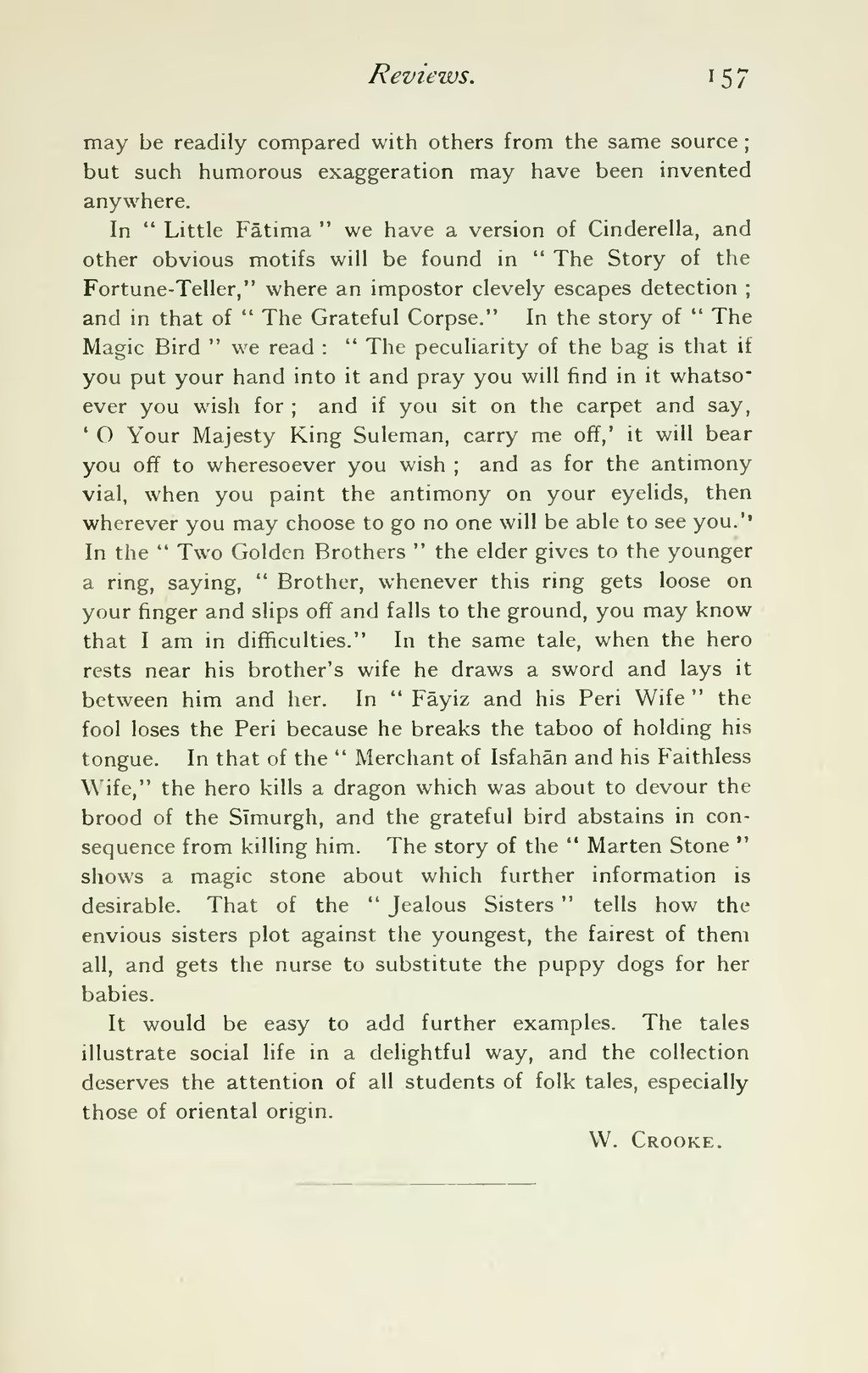may be readily compared with others from the same source; but such humorous exaggeration may have been invented anywhere.
In “Little Fātima” we have a version of Cinderella, and other obvious motifs will be found in “The Story of the Fortune-Teller,” where an impostor clevely escapes detection; and in that of “The Grateful Corpse.” In the story of “The Magic Bird” we read: “The peculiarity of the bag is that if you put your hand into it and pray you will find in it whatsoever you wish for; and if you sit on the carpet and say, ‘O Your Majesty King Suleman, carry me off,’ it will bear you off to wheresoever you wish; and as for the antimony vial, when you paint the antimony on your eyelids, then wherever you may choose to go no one will be able to see you.” In the “Two Golden Brothers” the elder gives to the younger a ring, saying, “Brother, whenever this ring gets loose on your finger and slips off and falls to the ground, you may know that I am in difficulties.” In the same tale, when the hero rests near his brother’s wife he draws a sword and lays it between him and her. In “Fāyiz and his Peri Wife” the fool loses the Peri because he breaks the taboo of holding his tongue. In that of the “Merchant of Isfahan and his Faithless Wife,” the hero kills a dragon which was about to devour the brood of the Sīmurgh, and the grateful bird abstains in consequence from killing him. The story of the “Marten Stone” shows a magic stone about which further information is desirable. That of the “Jealous Sisters” tells how the envious sisters plot against the youngest, the fairest of them all, and gets the nurse to substitute the puppy dogs for her babies.
It would be easy to add further examples. The tales illustrate social life in a delightful way, and the collection deserves the attention of all students of folk tales, especially those of oriental origin.
